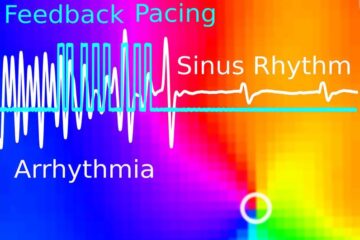New technology improves malaria control and vaccine development

The technique could even help to understand how anti-malarial vaccine and treatment strategies act to reduce malaria, say researchers from the Walter and Eliza Hall Institute, Swiss Tropical and Public Health Institute, University of Basel and the Papua New Guinea Institute of Medical Research.
Professor Ivo Mueller from the Walter and Eliza Hall Institute's Infection and Immunity division said the research team discovered that the number of new malaria parasites that infants acquire over time is strongly linked to the risk that the child will develop clinical disease.
“It was very clear that infection with new and genetically different malaria parasites was the single biggest factor in determining the risk of an infant becoming sick from malaria, more than any other factor including age, the use of bed nets or the risk of transmission in the area. We were actually surprised by how clear the correlation was,” Professor Mueller said.
The molecular technique to genetically differentiate Plasmodium falciparum parasites was developed by Dr Ingrid Felger at the Department of Medical Parasitology and Infection Biology, Swiss Tropical and Public Health Institute, Switzerland. Professor Terry Speed from the Walter and Eliza Hall Institute’s Bioinformatics division helped to develop mathematical algorithms to process the data.
Dr Felger said the researchers used high-throughput screening to determine the number of genetically-distinct Plasmodium falciparum malaria parasites that acquired by Papua New Guinean children aged one to four over a period of 16 months. The research was published today in the journal Proceedings of the National Academy of Sciences of the United States of America.
“This new research tool is elegantly simple but very powerful, and easily applicable in many circumstances, without a high level of technology or training,” Dr Felger said. “We think it could have profound applications. This technology will be particularly useful for assessing ideal vaccine candidates for preventing malaria, help to develop better ways of performing future human trials of new potential malaria vaccines, and identifying the mechanism of action for existing vaccines and treatments.”
Each year more than 250 million people worldwide contract malaria, and up to one million people die. Malaria is particularly dangerous for children under five and pregnant women. Plasmodium falciparum is the most lethal of the four Plasmodium species, and is responsible for most clinical disease.
Professor Mueller said the technology is already being used in the field, recently helping to explain why people with sickle-cell anaemia are less at risk of malaria infection. He said that accurately assessing the burden of malaria parasites acquired by children in countries where the disease is endemic is invaluable.
“One of our biggest problems in developing useful vaccines, treatments and preventative strategies for malaria is reliably predicting the distribution and risk of malaria at an individual level. There is huge variation in the risk of developing clinical malaria within a community or village, or within a particular age group, and we now have an accurate way to measure this,” Professor Mueller said.
The research was supported by the Swiss National Science Foundation, National Institutes of Health and the Victorian Government.
Read the scientific paper at Proceedings of the National Academy of Sciences.
Download media release (pdf).
For further information
Liz Williams
Media and Publications Manager
Ph: +61 3 9345 2928
Mob: +61 405 279 095
Email: williams@wehi.edu.au
Media Contact
More Information:
http://www.wehi.edu.auAll latest news from the category: Health and Medicine
This subject area encompasses research and studies in the field of human medicine.
Among the wide-ranging list of topics covered here are anesthesiology, anatomy, surgery, human genetics, hygiene and environmental medicine, internal medicine, neurology, pharmacology, physiology, urology and dental medicine.
Newest articles

Wildfire danger to increase due to climate change
WSL Institute for Snow and Avalanche Research (SLF) researchers expect an elevated wildfire danger in the Alpine Foreland from 2040 onwards due to changing meteorological conditions. The danger currently remains…

Advanced Brain Science Without Coding Expertise
Researchers at Helmholtz Munich and the LMU University Hospital Munich introduce DELiVR, offering a new AI-based approach to the complex task of brain cell mapping. The deep learning tool democratizes…

Gentle defibrillation for the heart
Using light pulses as a model for electrical defibrillation, Göttingen scientists developed a method to assess and modulate the heart function. The research team from the Max Planck Institute for…





















